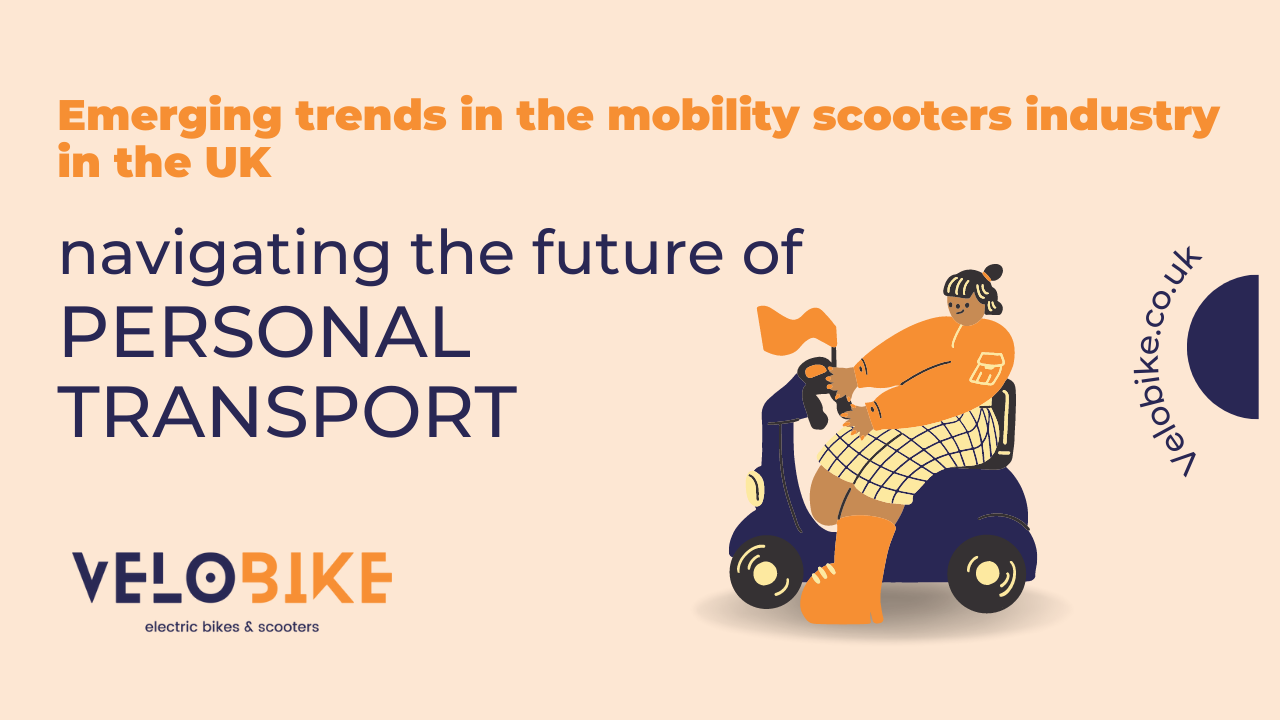
Have you ever wondered what’s new in the UK mobility scooter market? What are the latest features? And how can they assist in everyday life? In this article, we’ll delve into the recent trends in the mobility scooters industry in the UK. Just for you we’ll highlight their increasing modernity and user-friendliness. Let’s discover what’s currently leading the pack and the innovations that could benefit older adults and those with limited mobility in the UK.
The main trends in the mobility scooters industry in the UK
Going green – the rise of eco-friendly mobility solutions
Mobility scooters, and electric mopeds as well, with their green credentials, are increasingly becoming the go-to choice. They not only reduce carbon footprints. They also offer a quieter, smoother ride. As environmental concerns take center stage globally, the mobility scooter industry in the UK is embracing eco-friendliness. There’s a marked shift towards using efficient lithium-ion batteries, known for their longer lifespan and quicker charge times, replacing the older, less efficient counterparts. Mobility scooters manufacturers are not only focusing on the end product but are also investing in sustainable production processes. This ensures the entire lifecycle of the product, from conception to disposal, has a reduced environmental footprint. Moreover, to extend the lifespan of these vehicles and reduce waste, brands are emphasizing repairs over replacements and launching initiatives to recycle old scooters.
Where sleek design intersects with practicality
Gone are the days when mobility scooters were purely utilitarian. The modern scooter marries functionality with design. Sleek finishes, ranging from matte to chrome, coupled with a variety of colour options, ensure that there’s a mobility scooter to match every individual’s taste. The innovation doesn’t stop at aesthetics. Many of today’s models are designed with foldability in mind, allowing for easy transport and storage, i.e. model Veleco ZT16 – lightweight and foldable class-2 mobility scooter for the elderly and ones with disability issues. Furthermore, materials like aluminium and carbon fibre are being employed to craft scooters that are lightweight yet sturdy, enhancing both portability and durability.
Stepping into the future – tech upgrades in mobility
From Bluetooth connectivity and LED displays to USB charging ports, today’s scooters are a far cry from their predecessors. These features, once considered luxurious, are now becoming standard, catering to the tech-savvy generation of users. Incorporating technology into mobility scooters is becoming the norm rather than the exception. Digital displays, offering critical information such as battery life and speed, are becoming a mainstay. For those who like to explore, some high-end scooters come with integrated GPS systems, ensuring that users are never lost, no matter where their journey takes them.
Prioritising safety – more than just a ride
Safety remains a paramount concern for scooter users and manufacturers alike. Modern scooters (such as TURRIS with high-back captain seat) are being fitted with LED lights, which are brighter and more energy-efficient than traditional bulbs, ensuring users are always visible, especially during nighttime or in low-light conditions. Braking systems too have seen technological advancements, ensuring that the scooter comes to a halt quickly and safely when required. Additionally, various safety accessories, such as seat belts, flags for enhanced visibility and rearview mirrors for better spatial awareness, are being integrated into the scooter designs. Moreover, anti-theft mechanisms are being integrated to ensure the scooter remains secure when not in use.
Tailored to you – the power of personalisation
The modern consumer values personalisation, and mobility scooter manufacturers are listening. Today’s scooters come with a host of adjustable components. From handlebars to seats and footrests, users can tweak various parts of their scooter to ensure optimal comfort. Additionally, plenty of additional accessories, from storage solutions to phone and walking stick holders, are available, ensuring each user can tailor their scooter to their unique needs.
Shopping from home – the digital shift in mobility choices
The digital revolution hasn’t spared the mobility scooter industry. Many brands now offer virtual showrooms, complete with 3D views and tours. It allows users to explore scooters in-depth without leaving their homes. Customisation has also gone online, with potential buyers being able to select colours, features, and accessories through web portals. Shopping online doesn’t mean you do not have any chance to try out your future vehicle. All you have to do is pick the Test Drive option when choosing a mobility scooter. And once the purchase is made, direct-to-door delivery services ensure the scooter reaches its new owner without any hassles.
The mobility scooter industry in the UK is not just responding to the needs of its users but is proactively shaping a future where personal transport is inclusive, sustainable, and technologically advanced. As we move forward, it’s clear that the humble mobility scooter will continue to play a pivotal role in how we navigate our cities and communities. Do you see any trends that are prevalent among mobility scooter users? Share your thoughts with us in the comments!










I love my crystal but one thing annoying about it is it doe not have magnetic braking some times I find it frightening, although not fit in factory we should be able to purchase a
kit to enable magnetic brakes surly you can do this.